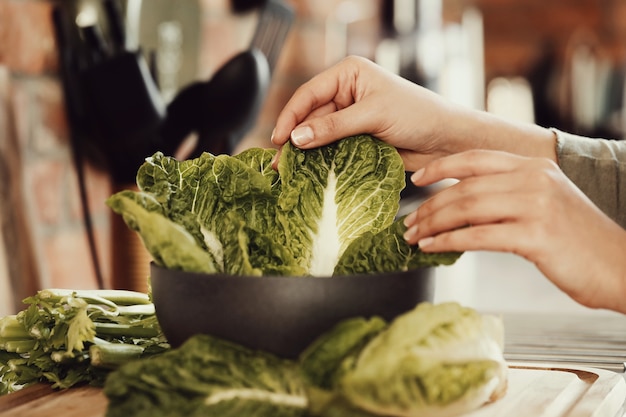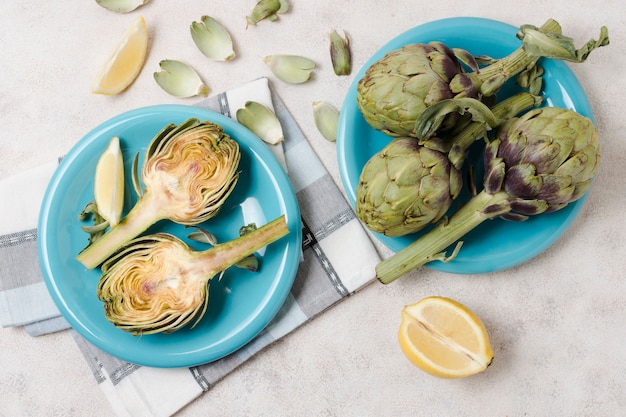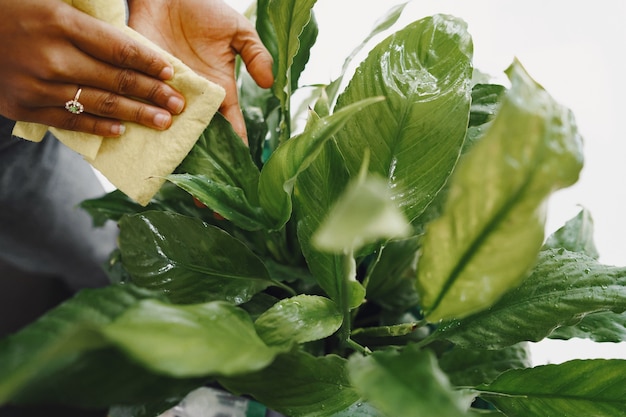Ever since I discovered the incredible versatility and heartiness of collard greens, I've been hooked. They're far more than just a simple side dish; they're a canvas for flavour, a vessel for tradition, and a gateway to culinary adventures. But I know what you're thinking: "Collard greens? That's my granny's thing, not mine!" Well, let me tell you, those days are over. We're about to embark on a journey, uncovering the secrets to cooking collard greens that are not only delicious but exciting, bold, and oh-so-satisfying.
We'll start by picking the perfect bunch, getting our hands dirty with expert prepping techniques, and diving into tried and true cooking methods. We'll then explore flavour profiles, from classic Southern comfort to adventurous twists that'll make your taste buds sing. And don't worry, I'll be sharing all my tried and true tips and tricks to achieve that melt-in-your-mouth texture you've always dreamed of.
Grab your apron, get your chopping board ready, and let's get cooking! We're about to uncover a whole new world of collard green goodness.
(Part 1) Finding Your Greens

The first step to crafting amazing collard greens is selecting the best possible ingredients. This might sound obvious, but trust me, there's a world of difference between a bunch of limp, sad greens and ones that are brimming with flavour. Think of it like choosing a good bottle of wine – you wouldn't just grab the cheapest one, would you?
Choosing the Right Collard Greens
Here’s what to look for when you’re browsing the produce aisle or strolling through a farmer’s market:
- Fresh and Green: The leaves should be a vibrant, deep green colour. Avoid any that are yellowed or have brown spots. They should look like they’ve just been plucked from the garden!
- Firm and Crisp: The leaves should be firm and have a good snap to them. If they're limp and wilting, they're probably past their prime.
- No Damage: Check for any tears, holes, or other damage. These can be a sign of pests or rough handling. You want those leaves pristine!
Personally, I always say, the best collard greens are the ones you pick yourself from a local market, right from the source! The smell of fresh produce and the friendly chatter of farmers make the experience all the more special. But if you’re not that lucky, a good supermarket will do just fine. Just be sure to take a moment to inspect the greens before you buy them.
(Part 2) Prep Like a Pro

Now that you've got your greens, it's time to get them prepped for cooking. This is where a lot of people go wrong, but don't worry, I'll show you the right way. It might sound tedious, but trust me, a little prep goes a long way. We want to ensure that every bite is tender, flavourful, and free of any tough bits.
Cleaning and Trimming
The first step is to give those greens a good wash. Fill a sink or large bowl with cold water, add the greens, and swish them around gently. You'll be amazed at the dirt and debris that comes loose. Once you’re happy with the cleanliness, take each leaf and give it a good rinse under running water.
Now for the trimming! Grab a sharp knife and remove the tough stems. You don't need to be overly precise here, just remove the thick, fibrous bits. Once you've trimmed the stems, you can chop the leaves into bite-sized pieces. You can even use a food processor for this, just make sure not to over-process them. You want them to have a bit of texture, not turn into a mushy paste.
Remember, the goal is to remove any tough bits that might get in the way of a truly enjoyable eating experience. And don't throw away those stems! They're packed with flavour, so we'll use them later to make a delicious stock.
(Part 3) Cooking Essentials

Alright, so you've got your greens prepped and ready to go, now it's time to start cooking. This is where the magic really happens, but before we get to the actual methods, there are a few essentials you'll need. This is not just about cooking; it's about setting yourself up for success.
The Right Pot
You'll want a large, heavy-bottomed pot. Collard greens take a good amount of liquid, so you need a pot that can handle it without overflowing. A dutch oven or a large stockpot is ideal, but you can get away with using a standard large pot if you're careful.
Remember, the heavier the pot, the more evenly it will distribute heat, ensuring those greens cook perfectly. A lighter pot might result in uneven cooking and a less enjoyable outcome.
A Good Ladle
This is for removing the greens from the pot and for adjusting the liquid levels as needed. A sturdy ladle is essential, and one that can withstand heat is a bonus. You'll be using it frequently to ensure the greens are submerged in the liquid and to taste test as they cook.
Patience
Alright, this isn't a literal ingredient, but it's just as crucial as the others. Cooking collard greens takes time, and it's important to be patient. Don't rush the process, let the greens simmer gently and develop their flavours. We're aiming for tender, flavorful greens, not overcooked mush.
Think of it as a slow dance between the greens and the heat, a gentle transformation that leads to an explosion of flavour. So put on some good music, grab a cup of tea, and let the magic happen.
(Part 4) Classic Cooking Methods
Right, so now you've got your pot, your ladle, and a healthy dose of patience, we can finally start cooking. There are several tried and true methods for cooking collard greens, each with its own unique characteristics. Let's explore the most popular:
Pot Cooking: The Time-Honoured Tradition
This is the most basic, and perhaps the most classic method. Simply add the prepped greens to your pot, cover them with water or stock, and simmer until they're tender. You can add aromatics like onions, garlic, or smoked meat to the pot for extra flavour.
This method is simple and straightforward, perfect for beginners or those who prefer a less hands-on approach. The downside is that it can be a bit bland, but we'll cover ways to add flavour later.
Imagine the aroma of simmering greens filling your kitchen, a comforting scent that brings back memories of home-cooked meals. That's the magic of pot cooking, a simple yet powerful method that delivers delicious results.
Pressure Cooking: A Modern Twist
For those who love a faster approach, a pressure cooker is a game-changer. Simply add your prepped greens, liquid, and aromatics to the pressure cooker, set it to the desired pressure, and let it cook until tender. This method is incredibly fast and efficient, perfect for busy weeknights.
The downside is that it can sometimes result in a softer texture than pot cooking, but the tradeoff for the speed is often worth it. Pressure cooking is all about harnessing the power of steam, transforming those tough greens into tender morsels in a fraction of the time.
For those who are short on time but want a flavourful meal, pressure cooking is a fantastic option. It allows you to enjoy the same delicious results as traditional methods, but in a fraction of the time.
(Part 5) Flavour Combinations: A Culinary Adventure
So now we've got the basics down, it's time to get creative with the flavours. Collard greens are a blank canvas, ready to be adorned with a symphony of spices, herbs, and other delicious ingredients.
Think of this as a culinary playground, where you can experiment and discover the flavour profiles that best suit your palate. From classic Southern comfort to bold and modern twists, the possibilities are endless. Let's explore some of the most popular flavour combinations:
Southern Comfort: The Classics
Let's start with the classics – the flavours that have been passed down through generations, the ones that evoke memories of home-cooked meals and warm hospitality. Think smoky bacon, salty ham hocks, a touch of vinegar, and a sprinkle of black pepper. These are the ingredients that truly embody the essence of Southern cooking.
Imagine the smoky aroma of bacon mingling with the earthy richness of collard greens, all brought together by a hint of vinegar's tang. This classic combination is a timeless favourite, offering a taste of tradition and comfort.
Bold and Modern: A Twist of the Unexpected
But who says we have to stick to tradition? Collard greens are incredibly versatile, and they can handle some unexpected flavour combinations. Think of adding a squeeze of lemon, a dash of chili flakes, a sprinkle of toasted sesame seeds, or a dollop of creamy tahini. These bold, modern touches can add a whole new dimension of flavour to your greens.
Imagine the brightness of lemon juxtaposed with the earthy greens, or the fiery kick of chili flakes dancing on your tongue. These unexpected additions transform collard greens into a modern culinary experience, showcasing their versatility and adaptability.
(Part 6) Tips and Tricks: Mastering the Greens
Alright, now that you've got a solid understanding of the basics and the flavour possibilities, let's dive into some tips and tricks that can elevate your collard greens from good to great. These are the secrets that I've learned over the years, the little touches that make all the difference.
Salt and Seasoning
Don't be shy with the salt! Greens need a good amount of salt to bring out their flavour. Add a generous pinch to the pot when you're cooking them, and taste as you go, adding more if needed.
Think of salt as the conductor of the orchestra, ensuring that all the other flavours play in harmony. Don't be afraid to experiment with different salts, such as smoked sea salt or kosher salt, to enhance the depth of flavour.
Don't forget about other seasonings too. Black pepper is a classic choice, but you can also experiment with other spices like garlic powder, onion powder, paprika, or even a pinch of cayenne pepper. A sprinkle of smoked paprika adds a depth of flavour that is both earthy and smoky, while a pinch of cayenne pepper adds a touch of heat.
Liquid Choice
You can use water, broth, or even a combination of both when cooking collard greens. chicken broth is a good choice for a classic flavour, but vegetable broth can add a lighter, more earthy touch. You can even use a bit of water and a splash of apple cider vinegar for a subtle sweetness.
Think of the liquid as the base of your flavour symphony, and choose wisely to enhance the overall flavour profile. Apple cider vinegar, for instance, adds a subtle sweetness and tang that beautifully complements the earthy notes of the greens.
Time is Key
Collard greens need time to simmer and become tender. Don't rush the process. The longer they cook, the more flavour they will develop. Just be sure to keep an eye on them, and add more liquid as needed.
Imagine the transformation those greens undergo as they simmer gently, slowly releasing their flavour and softening to a melt-in-your-mouth texture. Patience is key, allowing those greens to become the culinary stars they deserve to be.
(Part 7) Serving and Storage: The Finishing Touches
So your greens are cooked to perfection, and you're ready to serve them up. Here's how to do it right:
Serving
Serve the greens warm as a side dish or as part of a larger meal. You can add a dollop of butter or a drizzle of olive oil to the top for extra flavour. A sprinkle of chopped parsley or a dash of red pepper flakes can also add a touch of brightness.
Imagine the rich, earthy greens, glistening with butter or olive oil, and adorned with the vibrant colour of parsley or the fiery heat of red pepper flakes. These simple additions transform your collard greens into a culinary masterpiece.
Storage
Leftover greens can be stored in an airtight container in the refrigerator for up to 3 days. Reheat them gently on the stovetop or in the microwave before serving. You can also freeze leftover greens, but the texture might be slightly altered.
For those who love a good meal prep, storing those leftover greens is a great way to save time and enjoy deliciousness later. Just remember that the texture might change slightly when reheated, but the flavour will still be amazing.
(Part 8) FAQs: Your Collard Green Questions Answered
Now, you've probably got a few questions lingering, haven't you? Don't worry, I've got you covered. Here are some frequently asked questions about collard greens:
1. What are the health benefits of collard greens?
Collard greens are packed with nutrients, making them a healthy addition to any diet. They're a good source of vitamins A, C, and K, as well as iron, calcium, and fibre. They're also low in calories and fat, and they can help lower cholesterol and blood pressure.
They're a powerhouse of vitamins and minerals, offering a range of health benefits that make them a valuable addition to any diet. From boosting your immune system to supporting bone health, collard greens are a nutritional powerhouse.
2. What happens if I overcook collard greens?
If you overcook collard greens, they will become mushy and lose their flavour. They'll also turn a darker green colour, which can be a bit off-putting. So, keep an eye on them and don't rush the process.
Overcooking is the enemy of delicious collard greens. It transforms them from tender and flavorful to mushy and bland. The key is to cook them just until they are tender, allowing them to retain their vibrant colour and flavour.
3. Can I use other greens instead of collard greens?
Yes, you can use other greens in place of collard greens, such as kale, mustard greens, or turnip greens. Just be aware that they may have a slightly different texture and flavour.
Think of this as an opportunity to explore a world of greens, each with its own unique flavour profile and texture. Kale, for instance, has a slightly bitter flavour and a chewier texture than collard greens, while mustard greens offer a peppery punch.
4. How can I make collard greens more flavourful?
There are many ways to add flavour to collard greens. You can use a variety of aromatics, such as onions, garlic, smoked meat, and herbs. You can also add a splash of vinegar, a squeeze of lemon, or a dash of hot sauce. Don't be afraid to experiment and find what you like best.
Think of flavour as a spectrum, with endless possibilities to explore. Aromatic herbs like thyme and rosemary add a touch of earthiness, while a splash of vinegar or lemon adds a brightness that cuts through the richness of the greens.
5. Can I add collard greens to soups and stews?
Absolutely! Collard greens are a great addition to soups and stews. They add a hearty texture and a boost of flavour. Just make sure to add them towards the end of the cooking process, so they don't get overcooked.
Imagine the earthy flavour of collard greens simmering in a comforting soup or stew, adding a layer of depth and richness to the overall dish. They not only add flavour but also provide a satisfying texture that makes for a truly enjoyable meal.
And there you have it, folks. The ultimate guide to cooking delicious collard greens. With a bit of practice, you'll be whipping up these tasty greens like a pro. Now, go forth and conquer the culinary world, one delicious pot of greens at a time!
Everyone is watching

Corn on the Cob: The Ultimate Guide to Perfectly Cooked Ears
Healthy MealsAh, corn on the cob. Just the name evokes images of sunny days, barbecues, and that sweet, juicy flavour that ...

Perfect Pork Roast Oven Cooking Time: A Guide to Delicious Results
Healthy MealsThere's something truly satisfying about a perfectly roasted pork. The aroma alone is enough to make your mout...

Scallops: The Ultimate Guide to Perfect Cooking
Healthy MealsAh, scallops. Those delicate, sweet, and utterly delicious morsels of the sea. They hold a special place in my...

Ham Cooking Time: How Long to Bake, Smoke, or Boil a Delicious Ham
Healthy MealsAh, ham. It's a classic, isn't it? A real crowd-pleaser, especially around holidays. And when done right, it'...

Spaghetti Squash: The Ultimate Guide to Cooking and Serving
Healthy MealsRemember that time you saw spaghetti squash at the supermarket, looking all bumpy and strange, and thought, "W...
